Bass Players To Know: Jimmy Haslip
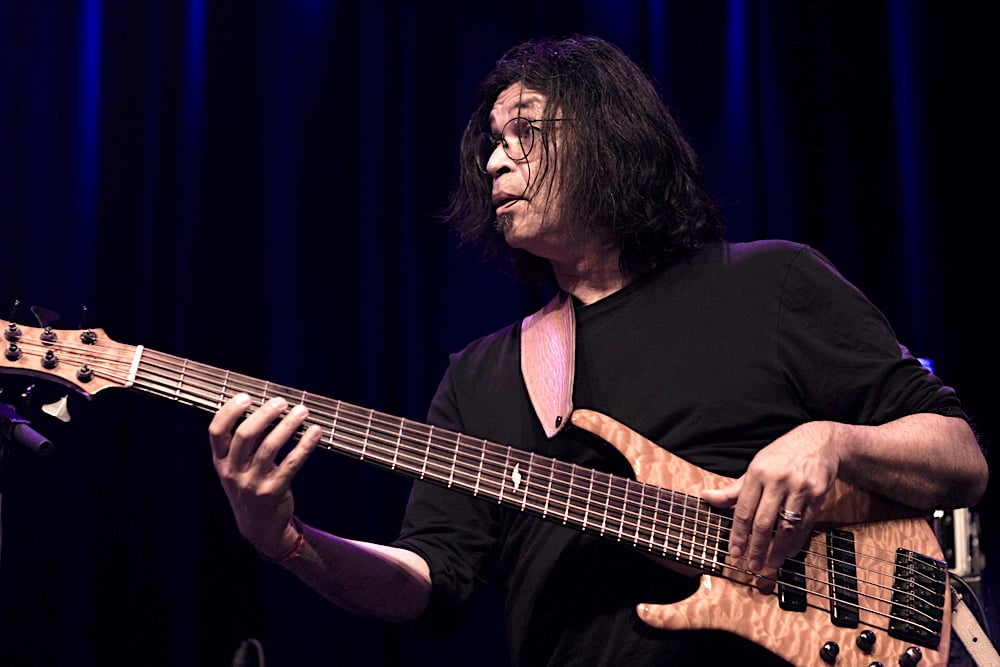
Genres evolve thanks to the players, composers, and producers who innovate. Their desire to make great music supersedes what is safe and familiar, resulting in something that is clever, exciting, different, or simply put, original. They pull from their personal musical influences, the records they grew up listening to, and the relationships that they’ve made within the industry. By putting new sounds to tape (or these days, to DAW), they help audiences and creators alike discover the capabilities of a particular instrument, group, or musical realm.
What we currently define as jazz fusion has evolved thanks to the efforts of one innovator, in particular, Jimmy Haslip. His longstanding tenure with the Yellowjackets, early adoption of the five and six-string bass, and diverse playing style makes him a linchpin in the evolution of the instrument and the genre of jazz. Take into account his credits as an L.A. session musician, his solo releases, and the fact that he has made innovative music with the best of the best for roughly half a century and there’s no doubt that we have a lot to learn from this Bass Player To Know.
Who Is Jimmy Haslip?
Born in the Bronx in 1951, Haslip grew up in Huntington, Long Island. With parents and siblings immersed in music, Jimmy was exposed to records of all genres and grew up playing trumpet in the school band. As a teenager, he picked up the electric bass and began playing in rock bands and gigging at social functions. After graduating high school, he landed a gig with a steadily working top-40 band and began envisioning a career in music.
In 1976, Haslip made the move to Los Angeles and within a few years, racked up recording credits with Gino Vannelli, Rod Stewart, Blackjack, Tom Scott, and many others. By the late 1970s, Haslip met Robben Ford and, in addition to working on Ford’s solo project, decided to form the Yellowjackets alongside Russell Ferrante (keyboards) and Ricky Lawson (drums). The Yellowjackets’ debut album in 1981 set the stage for what would become a career-long endeavor resulting in creative interplay, international success, and multiple Grammy nominations and awards. While the lineup changed from time to time, Haslip remained with the Yellowjackets until 2012.
In the meantime, Haslip became a sought-after session musician and side person thanks to his versatile nature and the use of fretless and five or six-string basses. His playing can be heard on records by Bruce Hornsby, Bobby McFerrin, Marylin Scott, Michael Franks, Anita Baker, Jeff Lorber, Allan Holdsworth, and countless others. Haslip frequently collaborates with jazz artists and session aces in the “supergroup” setting, resulting in projects such as Jing Chi, Renegade Creation, and ARC Trio.
As a producer and composer, Haslip has released a handful of solo projects, including Arc (1993), Red Heat (2000), and Nightfall (2010). His work ethic, creative inspiration, and desire to collaborate has resulted in one of the most eclectic and successful careers of any contemporary bassist.
Let’s Talk Style
Exceptional musicians, such as Jimmy Haslip, communicate in the same way a great orator would deliver a speech. They are articulate and able to take advantage of tonal inflection. They understand pacing and space in order to express an idea with charisma and eloquence. They excel at developing ideas during the writing process yet can extemporaneously discuss any concept brought to the table. Their vocabulary is vast, their knowledge of grammar—or theory—has developed over time and been put to the test. And, they can just as easily support the opinion of a colleague or hold their own in a heated dialogue.
This skill set develops over time. It’s the result of listening and learning from the past while being held accountable by the present. Haslip clearly demonstrates both qualities as a bass player, band member, career musician, and composer. Citing inspiration from Motown and Atlantic records of the 1960s to jazz and Latin music, his familiarity with a wide range of genres made it feasible, if not obvious, to fuse them together. His bass playing contemporaries, including Jaco Pastorius, made it a requirement to push the boundaries of the instrument and take creative risks.
Haslip’s ability to meet this challenge has resulted in a diverse compositional catalog marked by technical excellence and musical showmanship. Add in the fact that he’s left-handed and playing an upside-down and right-handed instrument and you may be even more impressed. His tone is crisp, his willingness to explore the range of five or six strings is daring, and his ability to execute challenging phrases will make you do a double-take. When given the opportunity to take the spotlight, he captivates listeners with mature phrasing, exceptional tone, and clear articulation.
Knowing that great minds think alike, it’s no surprise that Haslip finds himself in conversations with musicians at the highest level. His ability to react instantly and intuitively makes him a valuable asset—he pays attention to the music as it’s being made. Whether he engages in call-and-response with a keyboard player, emphasizes a drummer’s pocket, or takes a humble and reserved approach to a record date, he plays with intention and respect for the song. Lucky for us, Haslip’s willingness to showcase musicianship, composition and tonal variety has shaped the genres of jazz and fusion as we know them today.
Where Can I Hear Him?
“Village Church” (The Yellowjackets: Club Nocturne )
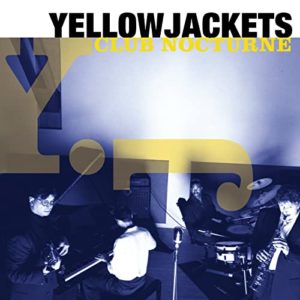 This tune features Haslip assuming a variety of musical roles. Taking the initial melody, his playing is attention-grabbing with the elegance and musical nuance that often alludes electric bass players. As he settles into a more traditional role, he provides a low-end counterpoint to rhythmically and harmonically supports the upper voices. His playing is nimble and humble, full of movement that doesn’t overshadow the other instrumentalists while enhancing the groove. He steps out with a conversational solo by leaving space between captivating musical statements in the higher register.
This tune features Haslip assuming a variety of musical roles. Taking the initial melody, his playing is attention-grabbing with the elegance and musical nuance that often alludes electric bass players. As he settles into a more traditional role, he provides a low-end counterpoint to rhythmically and harmonically supports the upper voices. His playing is nimble and humble, full of movement that doesn’t overshadow the other instrumentalists while enhancing the groove. He steps out with a conversational solo by leaving space between captivating musical statements in the higher register.
Listen: iTunes | Amazon MP3
“Joan Miró” (Jimmy Haslip, Scott Kinsey & Gergö Borlai: ARC Trio)
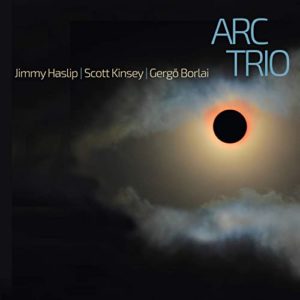 A showcase of modern fusion and artistic risk-taking, this eclectic soundscape requires multiple listens and a willingness to appreciate the art within chaos. Alluding to the surrealist style of visual artist Joan Miró—whose work often distorts, reimages, or rearranges pieces and characters—the band dares us to reinterpret the assumed roles of each instrument. Brisk walking movement in the bass register is accompanied by a back and forth of harmonics, chordal accents, fast-paced melodic phrases, and conversational interplay.
A showcase of modern fusion and artistic risk-taking, this eclectic soundscape requires multiple listens and a willingness to appreciate the art within chaos. Alluding to the surrealist style of visual artist Joan Miró—whose work often distorts, reimages, or rearranges pieces and characters—the band dares us to reinterpret the assumed roles of each instrument. Brisk walking movement in the bass register is accompanied by a back and forth of harmonics, chordal accents, fast-paced melodic phrases, and conversational interplay.
Listen: iTunes | Amazon MP3
“Saint And Satan” (Renegade Creation: Bullet)
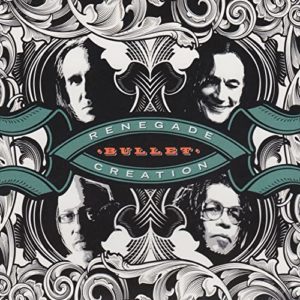 This collaboration with musical aces Robben Ford, Michael Landau, and Gary Novak combines blues-tinged harmony with sophisticated song structure. Haslip anchors this riff-driven rocker by executing the synchronized lines with a heavy attitude. Locking in with Novak’s pocket, he defines the groove and adds movement by quickly attacking the root, fifth, and octave during the verses. Throughout the psychedelic outro, Haslip highlights the dominant nature of the chord and creatively plays across the range of the instrument.
This collaboration with musical aces Robben Ford, Michael Landau, and Gary Novak combines blues-tinged harmony with sophisticated song structure. Haslip anchors this riff-driven rocker by executing the synchronized lines with a heavy attitude. Locking in with Novak’s pocket, he defines the groove and adds movement by quickly attacking the root, fifth, and octave during the verses. Throughout the psychedelic outro, Haslip highlights the dominant nature of the chord and creatively plays across the range of the instrument.
Listen: iTunes | Amazon MP3
“Dreaming Of You” (Selena: Dreaming Of You)
 Frankly, this performance gives bass players a reason to own a five-string, particularly in the realm of pop music. Haslip’s deep pocket and mature touch provide body to Selena’s smooth and sultry posthumous hit. His note choices force you to appreciate the power of the lower register; instead of overwhelming the song with superfluous low end, his approach makes you realize that the part simply wouldn’t have the same sonic impact if it were played an octave higher. Combine that with his clever use of chord inversions and the graceful melodic lines in the outro and you’ve got one remarkable bass track.
Frankly, this performance gives bass players a reason to own a five-string, particularly in the realm of pop music. Haslip’s deep pocket and mature touch provide body to Selena’s smooth and sultry posthumous hit. His note choices force you to appreciate the power of the lower register; instead of overwhelming the song with superfluous low end, his approach makes you realize that the part simply wouldn’t have the same sonic impact if it were played an octave higher. Combine that with his clever use of chord inversions and the graceful melodic lines in the outro and you’ve got one remarkable bass track.
Listen: iTunes | Amazon MP3
How about you? What’s your favorite tune or album with Jimmy Haslip?
Please share with us in the comments.
Ryan Madora is a professional bass player, author, and educator living in Nashville, TN. In addition to touring and session work, she teaches private lessons and masterclasses to students of all levels. Visit her website to learn more!

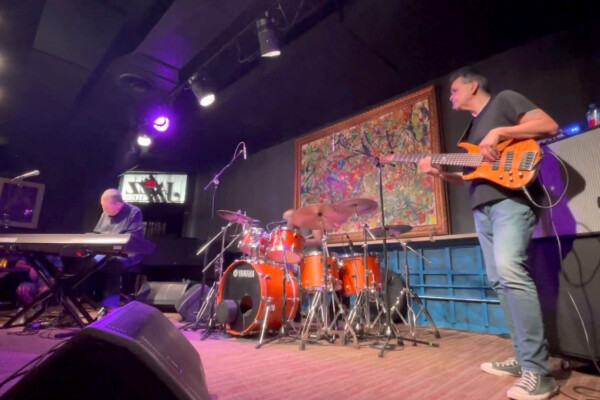
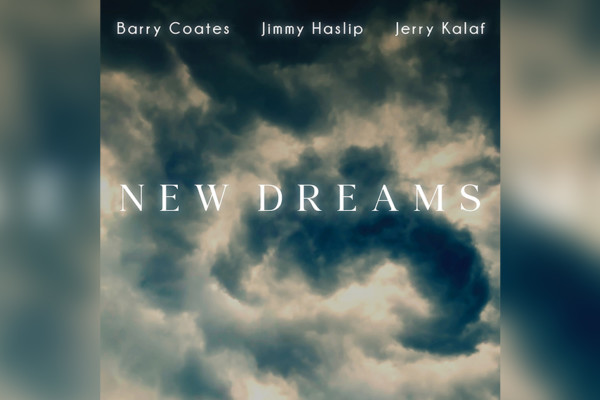
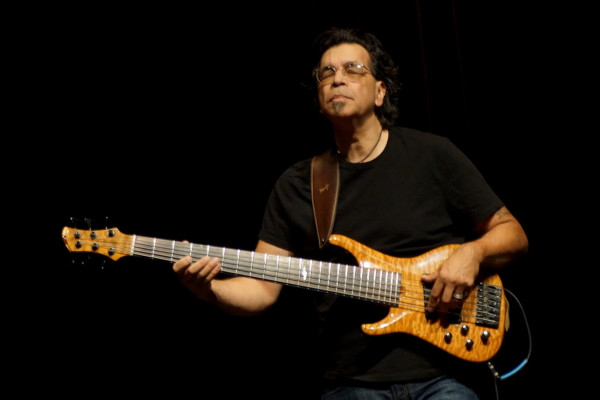
Outland from ARC album. Zawinul vibe happening.
Man Facing North from the album Like a River……a masterpiece on fretless bass.
Hey Jimmy. We graduated together from Whitman. Hope you come down to Galveston soon. Would love to see and hear you. Celeste Peters Byrd
Hello fellow Whitman grad…. we are all proud of Jimmy’s skill!
For me, it’s Gabriela Rose. Your oratory metaphor is clear in this piece, he makes a passionate speech.